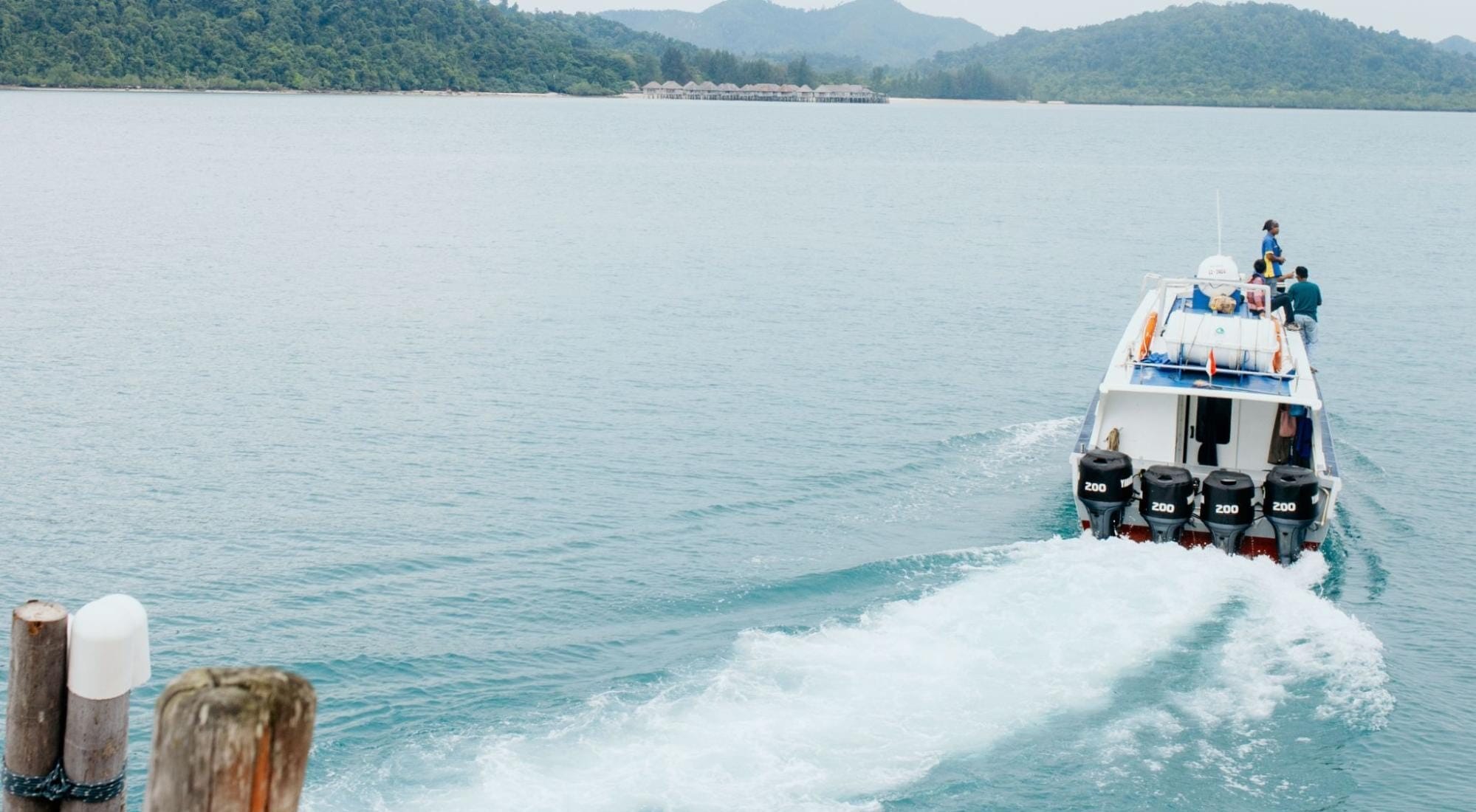Endangered Sea Turtles Love Telunas
August 1, 2019
It’s that season again! Telunas proudly hosts Hawksbill Sea Turtle mothers and their nests of eggs. About once every two to four years, female Hawksbill Sea Turtles return to their original hatching site to lay their own eggs, making three to six nests per nesting season with an average of 160 eggs per nest. For a few turtles in the South China Sea, that place is Telunas Private island beaches. So far this season, our staff has discovered three nests on the beach and safely transported a total of 354 eggs to the incubator in the turtle hatchery.

Why does Telunas move the eggs? Well, turtle eggs are in danger from many predators who would like to make a meal out of them. Monitor lizards, eagles, snakes, beavers, and termite pests are the main threats to the nests. After the mother lays her eggs, she buries them in the sand and returns to the sea, leaving the nest unguarded. Telunas staff regularly patrols the beaches on the lookout for buried nests and takes great care to ensure all the eggs are safely transported to our special incubator, where the baby turtles can grow and hatch in peace, away from predators.

Why is important to save the eggs? The Hawksbill Sea Turtle has been listed as critically endangered (facing a very high risk of extinction in the wild in the immediate future) by the International Union for Conservation of Nature and Natural Resources. The main threat to their survival is human harvesting for their prized shell, which is used in hair pieces, jewelry, and other items. Their numbers are also decreasing due to habitat loss, ocean pollution, and accidental killing by fisheries.

Part of a bigger picture. These turtles are part of the marine ecosystem and the coastal ecosystem. Without the Hawksbill Sea Turtle, these two ecosystems will suffer. Sea Turtles and Manatees are two of the very few species of marine animals to eat sea grass. Much like the grass in the average lawn, seagrass must be consistently cut short to keep it healthy and help it grow across the sea floor. Many fish, shellfish, and other marine creatures call the seagrass habitats home, so without sea turtles keeping it healthy, those marine animals are in danger too.

Healthy beaches. The Hawksbill Sea Turtles also help the coastal habitats by laying their eggs in the sand. Surrounding vegetation can get nutrients from unhatched eggs and even hatched egg shells to use and grow. As the plants grow, they develop stronger roots, which helps hold the sand together and prevents erosion. This improves the health of the entire coastal region. As humans who enjoy beaches, this is important to us.

Promoting the survival of the species. All of the eggs found this season has been moved to the incubator. The incubator is a climate-controlled environment inside a large styrofoam container, where the eggs are buried in sand and monitored three times a day for correct temperature and humidity. In the last nesting season, 87 percent of the eggs placed in the incubator successfully hatched. The baby turtles were then released onto the beach in a baby turtle birthday and release party. to make their way toward the water.

Nesting. In the past, Telunas has also used a method called semi-natural hatching. In this method, the eggs are left where the mother buried them. Our staff builds an enclosure over them, providing some protection against predators like eagles and monitor lizards; however, termite pests are still able to get to the eggs and prevent many of them from hatching. These nests are checked twice daily and are not climate controlled, exposing the eggs to colder and less ideal temperatures at night. The island climate and the nest being left where the mother buried it allows for a more natural hatching process.

Happy birthday little ones! This year, we estimate the eggs will hatch sometime in August. Guests staying at Telunas Private Island and Telunas Beach when the eggs hatch are encouraged to get involved and help the staff release the baby turtles once they are ready to go to the sea.

At Telunas, we do our part to help the survival of the critically endangered Hawksbill Sea Turtle, and you can too. Learn more about Hawksbill Sea Turtles and how you can get involved here: https://conserveturtles.org
Sources:
Information About Sea Turtles: Frequently Asked Questions. (n.d.). Retrieved July 30, 2019, from https://conserveturtles.org/information-sea-turtles-frequently-asked-questions/
Information About Sea Turtles: Hawksbill Sea Turtle. (n.d.). Retrieved August 12, 2019, from https://conserveturtles.org/information-about-sea-turtles-hawksbill-sea-turtle/
About the authors: Thank you to Marisa, an intern with Telunas, Yogaku, Telunas Private Island’s Team Leader for Guest Relations and Yani.



